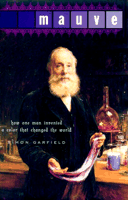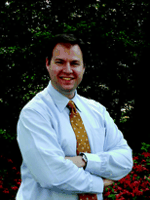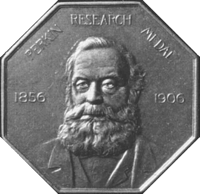Color Me With Good Fortune

William Henry Perkin (1838–1907) may have done more for the promotion of chemistry in Britain than did the efforts of Humphrey Davy, John Dalton, J.J. Thomson, and Michael Faraday combined. But who remembers his name, let alone his accomplishments? Simon Garfield brings us up to speed with his account of Perkin’s life and legacy titled Mauve: How One Man Invented a Color That Changed the World. The double entendre of the subtitle refers not only to the new fabric dye that was all the rage in Europe, America, and Asia, but also to the fact that few could foresee the profound effects his discovery would have on technological advances up through the mid-part of the twentieth century.
In 1837, at a meeting of the British Association, the German scientist Justus Liebig declared that: “England is not the land of science. There is only widespread dilettantism...” Although his statement was certainly steeped in hyperbolic rhetoric, he was correct to the extent that the teaching of chemistry in England only existed as a part of a wider survey of science, and laboratory practica (as part of the academic process) was completely unheard of. Indeed, at this time in England, chemistry was considered a disreputable field of study and a mad pursuit that would not put bread on the table. However, Liebig’s speech made men of influence—including Prime Minister Sir Robert Peel, then-colonial secretary William Gladstone, and Prince Albert—work toward funding and building the Royal College of Chemistry.
William Perkin grew up in the East End of London in a well-to-do middle class home surrounded by a neighborhood seeping with abject poverty and squalor. He had a curious mind, as do most budding scientists, and frequently, his father’s money went to funding William’s innocent dawdlings. But it wasn’t until William visited the homestead of his deceased grandfather, a farmer by trade and a bona fide alchemist by conviction, that he chanced upon a working—if dilapidated—laboratory in the old man’s cellar.
During his education at the City of London School, William’s teacher Thomas Hall recognized William’s talent for science and encouraged him—he was fourteen at the time—to write to Michael Faraday for an invitation to hear the famous scientist’s lectures at the Royal Institution. These lectures must have left a great impression on young William and his interest in pursuing chemistry. However, William’s father wished him to become an architect, like William’s older brother. With pressure from Thomas Hall, William’s father relented and thus at age fifteen, William enrolled in the Royal College of Chemistry in 1853. Three years later William made his discovery, and two years after that, he had made his fortune at age twenty. But let’s go back briefly…
At the opening of the Royal College of Chemistry, coal tar was already recognized as an immensely complex material. The first
students understood that it consisted of the elements carbon, oxygen, hydrogen, nitrogen and a little sulfur, and they knew
that from these combinations an inviting list of substances could be formed. [p.9]
When William Perkin was admitted to the Royal College of Chemistry, his mentor, August Hoffman, a German chemist with decades of experience behind him, quickly recognized Perkin’s abilities, and William became Hoffman’s youngest assistant. Hoffman gave Perkin the task of finding a way to synthesize quinine, at the time the only effective treatment for malaria. Quinine was always in great demand, and the need for it was outstripping (so to speak) the supply available from the bark of cinchona trees grown in Bolivia and Peru. The synthesis of quinine would elude Perkin, but ah…serendipity and the prepared mind….
On the top floor of his father’s house, in his makeshift laboratory, Perkin embarked on a strategy he thought would yield quinine: the addition of two molecules of water to one molecule of naphthalidine; however, after extraction and desiccation of his final product, he ended up with a reddish powder. Going back to the drawing board, Perkin worked with aniline, a simpler compound, and followed the steps of his synthesis procedure again. This time, he ended up with a black sludge. Still stymied, he worked further on the sludge, purifying it, desiccating it, and resuspending it in alcohol. He spread the resulting solution onto a piece of silk and was surprised to see the gloriously mysterious light purple hue. He called the chemical mauveine, and from that, originally termed the color Tyrian Purple, after the exotic and prohibitively expensive purple color it resembled that is obtained from mollusks. Later, it gained its popular name, mauve, by the acceptance of the French word for the color.
The rest of the first half of the book (subtitled Invention) is devoted to those occurrences immediately following the discovery of mauveine. It was to his credit, and luck, that he sought out the advice of Robert Pullar, the owner of a well-regarded dye works in Scotland. Pullar encouraged the eighteen year old Perkin to manufacture more dye, and told him that if the dyed fabric would remain color-fast and not fade in the sun, Perkin would be a very wealthy man. Mauveine provided Perkin with his first fortune—after all, this was the world’s first synthetically manufactured aniline-based dye. Perkin also fought his rivals in England and in Europe in several patent-infringing lawsuits. Perkin’s fame was sealed with his second discovery: a red dye known as alizarin that began to replace the more expensive natural plant dye obtained from madder.
Through all of this, Perkin’s remained a modest man for whom self-promotion was an ill-fitting garment. He allowed others to take undeserved credit for his groundbreaking work. He remained a deeply religious man who stayed humble in the face of accolade, and at age thirty-six, abruptly left the business of chemical manufacture, his legacy assured and his fame firmly entrenched. For the next thirty-three years, he sat on the boards of several scientific journals and was active in the promotion of church-related matters. In 1906, the golden jubilee of his discovery of mauveine, he came to America, and was feted across the country. It was during this tour that he was awarded the first Perkin Medal, regarded today as the highest honor in American industrial chemistry. There are several amusing anecdotes about the grand party held at Delmonico’s in New York—for instance, all attendees wore mauve-dyed bow ties.
[Dr. Schweitzer explained,] “In eating the luscious frankfurter, your soul rejoices to see the sanguineous liquid oozing from
the meat—alas, coal tar colors have done it. The product of the hen is replaced by yellow coal tar colors in custard powders…leather,
paper, bones, ivory, feathers, straw, grasses are all colored, and one of the most interesting applications is the dyeing
of whole pieces of furniture by dipping them in large tanks, which transform the wood into walnut, mahogany at your command…”
[p. 24]
The second part of Garfield’s book (subtitled Exploitation) chronicles the advances made in other industries as a result of not only Perkin’s discovery of mauveine, but also his nearly single-handed rendering of chemistry as a respectable endeavor in Britain. [Notwithstanding, Perkin did suffer at the hands of several of his contemporaries, including his mentor August Hoffman, for selling out to undertake large-scale manufacturing of dyes (read: applied science) rather than to remain a bench chemist striving to identify the synthesis routes to quinine and other useful products (read: basic science)]. We are treated to an analysis of how German chemistry burgeoned ahead of British chemistry—recall Liebig’s infamous quote—and created huge conglomerations of industrial giants that ruled the world of production: AGFA, BASF, Bayer, Hoechst, etc. Additionally, Garfield entreats us to follow his train of thought in tracing the production of Bakelite and photodynamic cancer therapies back to Perkin’s discovery.
Strangely, Garfield chooses to intercalate his writing with brief interviews with contemporary advertising mavens and scientists whose presence, one supposes, is to further cement Perkin’s legacy to contemporary work and thought. However, I found it to be a bit jarring—when rolling along with the flow of the author’s narrative—to be thrown suddenly into the quotes of another interviewee’s opinions.
My main criticism of Garfield’s book is that it feels overlong. Part two of the book—Exploitation—seems obsequiously to account for every possible technological breakthrough that might be traced back to Perkin’s annus mirabilis of 1856. The weaving of endless connections of technology begetting new technologies and applied sciences is best left in the hands of such masters as James Burke, whose book Connections is, woefully, out of print. Although the reader is left with a sense of awe, I began to think “enough already,” and wondered if this book would have been better if published as two books. Indeed, splitting the story into two separate books (i.e., Personal History, and New Technologies) would be a disservice to the author’s vision and the wide audience that this book deserves: in one warmly written volume, Garfield provides—for the casual reader of science history—a wonderful introduction to the man, the chemist, and his legacy.
Simon Garfileld is the author of several books and received the Somerset Maugham Award in 1995.

- © American Society for Pharmacology and Experimental Theraputics 2002




